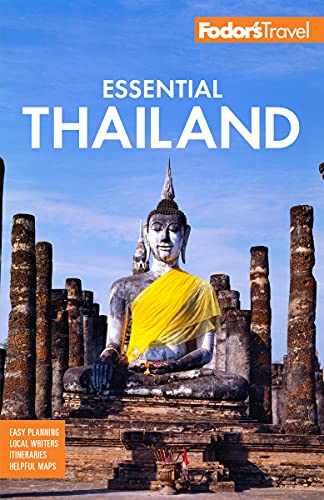Buddhism in Thailand
Almost 95% of Thailand's population is Buddhist (4% is Muslim, and the remaining 1% is Taoist, Confucianist, Hindu, Christian, and Sikh). Buddhism is considered one of the foundations of Thai nationhood, represented on the flag by two white bars between red bars for the people and a central blue bar for the monarchy. Thai kings are required to be Buddhist: King Rama IV spent 27 years as a forest monk before ascending the throne in 1851. The country has 400,000 monks and novices, many of whom take alms bowls into the street each day to receive food from laypeople.
Origins
Buddhism first showed up in Thailand in the Dvaravati Mon kingdom between the 6th and 9th centuries. The Dvaravati capital of Nakhon Pathom, 55 km (34 miles) west of Bangkok, was the region's first Buddhist center. In the 14th century, Buddhism became the official religion of Sukhothai, the first Thai kingdom. In 1997 it was written into the constitution as the state religion of modern Thailand. There are two main branches of Buddhism in Asia: Theravada, found today in Thailand, Myanmar, Cambodia, Laos, and Sri Lanka; and Mahayana, which spread north from India to China, Korea, Vietnam, and Japan. The Mahayana movement emerged from Theravada, the original teachings of the Buddha, in the 1st century. It's a less austere doctrine than Theravada, which stresses devotion to study and meditation.
Practice and Rituals
Thai children learn Buddhist teachings (dharma) in school, and most males will at some time ordain as a bhikkhu (monk). Some only do this for a few days, but many join the monkhood each July for the three-month Rains Retreat (sometimes referred to as Buddhist Lent, when monks are required to remain in their wats for the duration of the rainy season) in July, which is marked by major festivals, such as the Candle Parade, in Nakhon Ratchasima. Joining the monkhood, even for a short time, is such an important event that employers grant time off for the purpose. Women wanting to devote their lives to Buddhism may become white-robed nuns, known as mae chi. However, women aren't allowed to be officially ordained in Thailand, though a growing feminist lobby questions their lower status and is pushing for ordination. Although most Thais don't visit temples regularly, wats are the center of community life and sometimes serve as schools, meeting halls, and hospitals. Alongside spiritual guidance and funeral rites, monks provide ceremonies in houses and businesses to bring good fortune, and will even bless vehicles to keep drivers safe from accidents or cell phones to keep them ringing with business. They are also traditional healers, and created many of the herbal remedies that now form the basis for spa treatments.
Modern Concerns
Many commentators fear that modernization is eroding Thailand's traditional Buddhist values, and that material rewards will overshadow the Buddha's teachings. It's true that greater personal wealth has brought consumerism to the middle classes, and young Thais are exposed to western culture through foreign education, TV, and the Internet. However, Buddhism continues to be a dominant influence on the national psyche.




